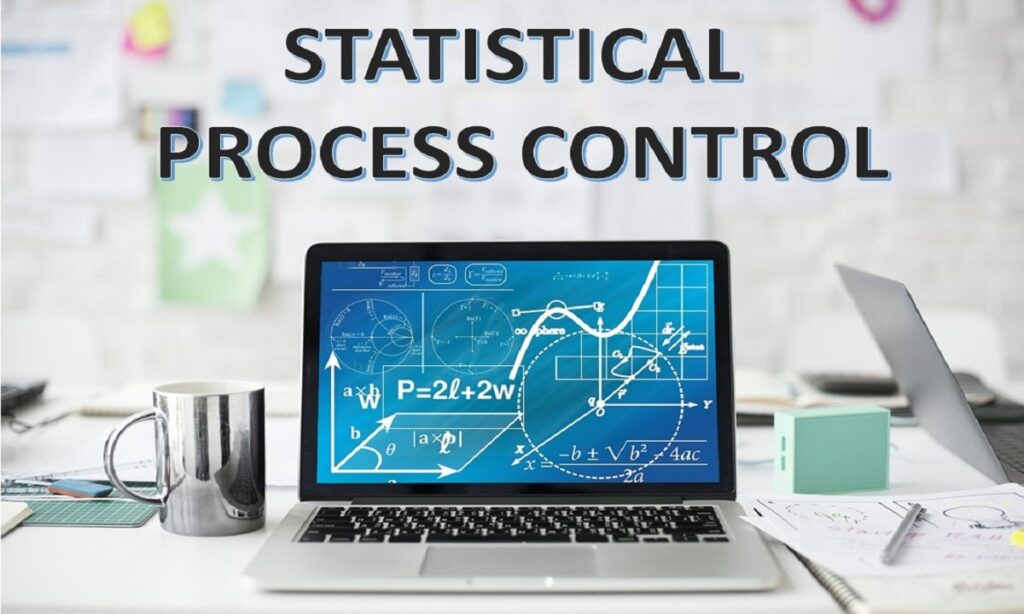Looking to improve the quality and efficiency of your business processes? “Statistical Process Control: A Comprehensive Guide for Business Owners” is the ultimate resource for mastering this powerful tool. From the basics of SPC to advanced applications, this guide will give you the knowledge and skills you need to achieve consistent, high-quality results in your business. Whether you’re a seasoned pro or just getting started, this guide is an essential reference for anyone looking to optimize their processes and drive success.
In today’s world, where competition is fierce and quality is a top priority for businesses, statistical process control (SPC) is an essential tool. SPC is a statistical method used to monitor and control processes, ensuring that they are operating efficiently and effectively. This comprehensive guide will provide an in-depth look at SPC, its benefits, and how it can help businesses improve their processes.
1. Introduction to Statistical Process Control
Statistical Process Control (SPC) is a statistical technique used to monitor, control, and improve processes. It is an essential tool for businesses that want to ensure the quality of their products or services. SPC allows businesses to identify and eliminate problems before they cause significant issues. SPC can help businesses reduce costs, increase customer satisfaction, and improve their overall operations.
2. Understanding the Basics of SPC
2.1 Control Charts
The most common tool used in SPC is the control chart. Control charts are graphical representations of a process over time. They are used to monitor the process and identify any changes or trends that may indicate a problem.
There are several types of control charts, including:
X-bar and R chart
X-bar and S chart
Individual and Moving Range (I-MR) chart
2.2 Statistical Measures
In addition to control charts, SPC uses statistical measures to analyze data. Some of the most common statistical measures used in SPC include:
- Mean
- Standard Deviation
- Range
- Variance
- Median
3. Implementing SPC in Your Business
3.1 Defining Your Process
Before implementing SPC, you must first define your process. This involves identifying the inputs, outputs, and steps involved in the process. Once you have a clear understanding of your process, you can begin collecting data.
3.2 Collecting Data
Data collection is a crucial step in implementing SPC. You must collect data consistently and accurately to ensure that your control chart is reliable. Data can be collected manually or automatically using software.
3.3 Creating a Control Chart
Once you have collected data, you can create a control chart. The control chart will allow you to monitor your process and identify any trends or changes that may indicate a problem. You can use software to create control charts, or you can create them manually.
4. Analyzing Data with SPC
4.1 Identifying Outliers
One of the primary purposes of SPC is to identify outliers. Outliers are data points that fall outside the normal range of the process. Outliers can indicate a problem with the process that needs to be addressed.
SPC can also be used to analyze process capability. Process capability refers to the ability of a process to consistently produce output within the specifications or requirements. By analyzing process capability, businesses can identify areas for improvement and make changes to their processes to ensure that they are meeting the desired specifications.
5. Benefits of Statistical Process Control
5.1 Quality Improvement
One of the most significant benefits of SPC is quality improvement. SPC allows businesses to identify and eliminate problems before they cause significant issues, ensuring that products or services meet the desired specifications consistently. By improving the quality of their products or services, businesses can increase customer satisfaction and loyalty.
5.2 Cost Reduction
SPC can also help businesses reduce costs. By identifying and eliminating problems in their processes, businesses can reduce waste, improve efficiency, and ultimately lower costs. Additionally, SPC can help businesses avoid costly mistakes, such as recalls, which can damage their reputation and bottom line.
5.3 Customer Satisfaction
Improved quality and lower costs can lead to increased customer satisfaction. Satisfied customers are more likely to remain loyal to a business and recommend it to others. By using SPC to improve their products or services, businesses can improve their reputation and customer loyalty.
6. Challenges of Implementing SPC
6.1 Resistance to Change
One of the biggest challenges of implementing SPC is resistance to change. Some employees may be resistant to using new tools or methods, making it challenging to implement SPC successfully. To overcome this challenge, businesses must engage employees and ensure that they understand the benefits of SPC.
6.2 Lack of Data
Another challenge of implementing SPC is a lack of data. SPC relies on accurate and consistent data to be effective. If businesses do not have enough data or if their data is inaccurate, SPC may not be useful. To overcome this challenge, businesses must ensure that they are collecting data consistently and accurately.
6.3 Inadequate Training
Finally, inadequate training can also be a challenge when implementing SPC. Employees must be trained on how to use SPC tools and techniques effectively. Without proper training, employees may not understand how to use SPC or may not use it correctly.
7. Best Practices for SPC
7.1 Engage Employees
To ensure that SPC is implemented successfully, businesses must engage employees. Employees must understand the benefits of SPC and how to use it effectively. Businesses should provide training and encourage employees to participate in the SPC process.
7.2 Continuously Monitor Processes
SPC is not a one-time process. Businesses must continuously monitor their processes to ensure that they are operating efficiently and effectively. This involves collecting data regularly and analyzing it to identify trends or changes that may indicate a problem.
7.3 Standardize Processes
Finally, businesses must standardize their processes to ensure that they are consistent and reliable. Standardizing processes can help businesses identify problems quickly and make changes to ensure that they are meeting their desired specifications.
8. Conclusion
In conclusion, Statistical Process Control is a valuable tool for businesses that want to ensure the quality of their products or services. SPC allows businesses to identify and eliminate problems before they cause significant issues, improve quality, reduce costs, and increase customer satisfaction. While implementing SPC may come with challenges, following best practices and engaging employees can help businesses overcome these challenges and reap the benefits of SPC.
9. FAQs
1. What is Statistical Process Control (SPC)?
Ans. Statistical Process Control is a statistical technique used to monitor, control, and improve processes. It involves collecting and analyzing data to identify trends or changes that may indicate a problem with the process.
2. How does SPC help businesses improve their processes?
Ans. SPC helps businesses improve their processes by identifying and eliminating problems before they cause significant issues. By continuously monitoring their processes with SPC, businesses can improve the quality of their products or services, reduce costs, and increase customer satisfaction.
3. What are the benefits of implementing SPC?
Ans. The benefits of implementing SPC include quality improvement, cost reduction, and increased customer satisfaction. By improving the quality of their products or services, businesses can increase customer loyalty and improve their reputation.
4. What are the most common statistical measures used in SPC?
Ans. The most common statistical measures used in SPC include mean, standard deviation, range, variance, and median.
5. What are control charts, and how are they used in SPC?
Ans. Control charts are graphical representations of a process over time. They are used in SPC to monitor the process and identify any trends or changes that may indicate a problem. There are several types of control charts, including X-bar and R chart, X-bar and S chart, and Individual and Moving Range (I-MR) chart.
6. How can businesses overcome resistance to change when implementing SPC?
Ans. Businesses can overcome resistance to change when implementing SPC by engaging employees and providing training. Employees must understand the benefits of SPC and how to use it effectively to overcome resistance to change.
7. What are some of the challenges of implementing SPC?
Ans. Challenges of implementing SPC include resistance to change, lack of data, and inadequate training. To overcome these challenges, businesses must engage employees, collect data consistently and accurately, and provide adequate training.
8. How often should businesses monitor their processes with SPC?
Ans. Businesses should monitor their processes with SPC regularly. This involves collecting data consistently and analyzing it to identify trends or changes that may indicate a problem.
9. Can SPC be used in any industry or business?
Ans. Yes, SPC can be used in any industry or business that involves a process. It is commonly used in manufacturing, healthcare, and service industries.
10. What are some of the best practices for implementing SPC in a business?
Ans. Best practices for implementing SPC in a business include engaging employees, continuously monitoring processes, and standardizing processes. Businesses must collect data consistently and accurately and provide adequate training to employees.

